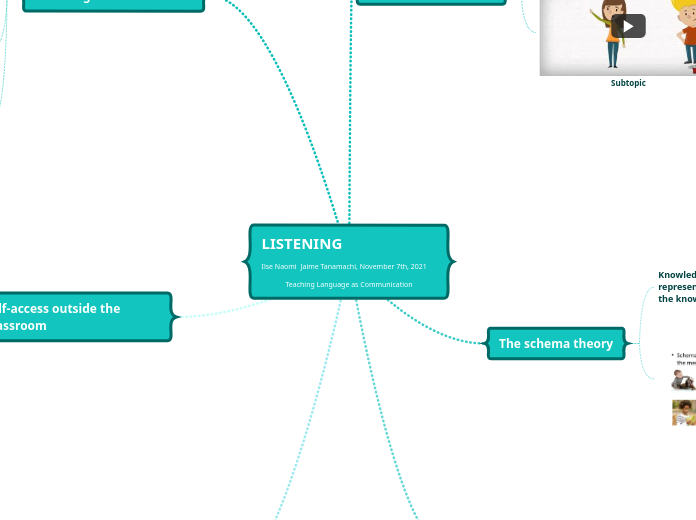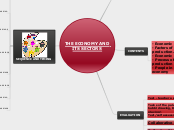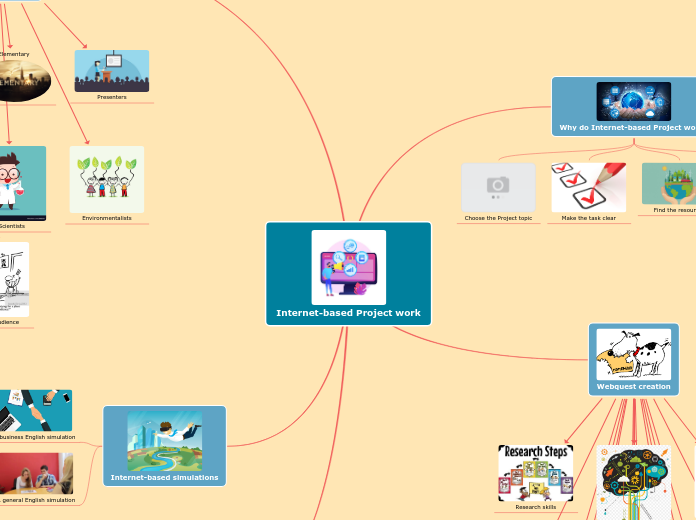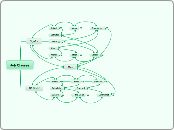LISTENING Ilse Naomi Jaime Tanamachi, November 7th, 2021 Teaching Language as Communication
Tips:
- Cover letters should be one page long and divided into three to four paragraphs.
- In general, a relevant and short cover letter is best. Three paragraphs tops. Your go-to word count shouldn’t exceed 300 words.
- When sending a cover letter via email, include your name and the job you're applying for in the subject line of the message.
Develop students listening skills
The third paragraph should prove that you’ll fit in and why the company is the perfect fit for you!
Attention to accuracy and an analysis of form
Learners gain confidence in listening for meaning
Working on comprehension activities
Show that your experience and knowledge will let you succeed with the project and benefit the company.
Learners have opportunities for assessing and revising what they have achieved
Focusing on meaning
Show that you did your research and know something about the company, perhaps an upcoming project, etc.
Mobilize both their linguistic and non-linguistic abilities to understand what is heard
Self-access outside the Classroom
The best cover letter ending is by providing value.
Tell the hiring manager that you look forward to meeting them in person and discuss.
Selecting right topics
Right level
Interest of learners
Use of real material
Tapes/videos/DVD as self-access study materials.
Listening in EFL classroom
A cover letter is a professional correspondence, so you should always use formal closing!
Best wishes
Cheers
Eagerly waiting for a response
Warm regards
Warmest regards
Warmly
Have a great day
Yours faithfully
Abbreviations
Emojis
Starting out by listening to English (instead of speaking it) helps your brain retain basic knowledge about what sounds best in English.
Teacher's responsibilities
Encourage more participations in activities and tasks in classroom
Set meaningful, focused and graded listening tasks
Visualize the objectives and means of the stages
Understand their learners’ needs
Understand the context
Understand the words
Difficulties in listening to English in EFL classroom
The first paragraph will determine if the hiring manager will read on.
Inability to link words to the context
Unskillful in using strategies to summarize heard information at the macro-level and micro-level.
Lacking exposure to different accents and vocabulary
Lack of practice with different kinds of accents and colloquial vocabulary
Lacking the ability to skim what is heard
Communicate your passion for your work, and your excitement about the job and company.
Inability to keep up with redundancy, noise, and the inability to guess
The problem of sounds
You should mention the position you are applying for, as the hiring manager can often look for candidates for several job openings.
E.g.: I am writing to express my strong interest in the x position open at x company.
Pronunciation, rhythm, intonation and stress
The schema theory
You should address a cover letter directly to the hiring manager.
The hiring manager will see your greeting first so that makes it one of the most important parts of your cover letter. Also, people are most likely to react to the sight of their own names.
Knowledge is represented and that representation facilitates the use of the knowledge.
Top-down processing
Find an existing knowledge structure to facilitate the assimilation of new information.
Bottom-up processing.
Triggers certain past experiences or perceptions about the topic
The listening process
The header of every professional cover letter should include your contact information, employer's contact information.
Subtopic
Final stage
The listener is able to construct a meaning from the utterance.
Second stage
The processing of the information by the short-term memory
First stage
Optionally you can add
The sounds go into the “echoic” memory and are organized into meaningful units









